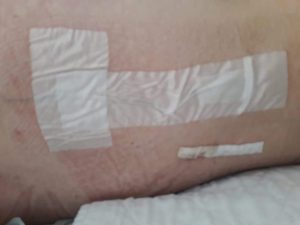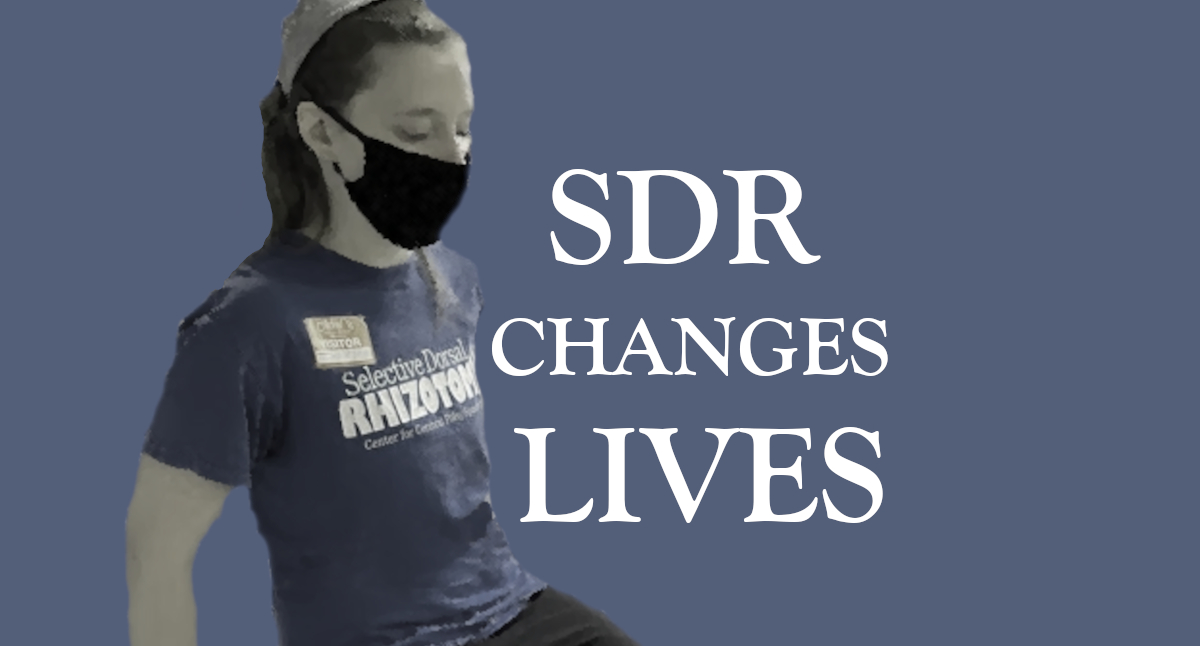hospital FAQ
What was your sensation like after SDR? Were your legs numb?
When I woke up in the recovery room, my legs felt extremely heavy, and I couldn’t feel or move much from the waist down—but I could wiggle my toes so much more easily than ever before in my life! My understanding is that this initial numbness was partly because of the epidural and partly because of the sensory nerve cutting.
At St. Louis Children’s, after 3 days, the epidural comes out. My legs still felt numb after that, but not as much. It was very much like a Novocaine sensation.
My feet also felt ice cold for a few days, even with blankets and socks—it’s just part of the nerves figuring things out again! When I’ve given care packages to others undergoing SDR, I’ve always made sure to include some fuzzy socks. People are sometimes confused by this if it’s summertime…but by day 3 post-SDR, they understand! ? My feet also had some pins and needles for several weeks, and my feet and legs were very sensitive to light touch; if people had to handle my legs or feet, it was much more comfortable for me if they touched them firmly. All of this improved significantly over the upcoming months.
Is SDR painful?
No one’s experience is exactly the same, but when I first woke up in the recovery room and for the first day post-op, I felt very minimal pain; it felt way easier than any of the other surgeries I’ve ever had!
Over the next few days, my back started to hurt quite a lot though, and I had a lot of nausea and was sick to my stomach. The pain team at St. Louis Children’s increased the amount of medication going through my epidural, which helped a ton. Once the epidural was out (the removal process was painless), I took oral pain medications.
I also had some pretty bad muscle spasms in my lower back, but nurses can provide a muscle-relaxing medication to help with those. Some people find that day 3 (epidural removal day/first day out of bed at St. Louis Children’s) is the hardest, but I actually started feeling better once I was able to get up and move a bit. It hurt to take steps, but the pain was in my low/mid back, not my legs. My legs felt heavy and light at the same time, but freer than ever before—it really was the coolest feeling!
My pain improved gradually; by about 1 week post-op, I could turn over in bed without help again. I used a pillow to support my back whenever I was sitting for about 3 or 4 weeks. It took about 5 weeks for my back to stop hurting completely.
I also experienced temporary nerve pain starting at about day 10 post-SDR, which is fairly common for teenagers and adults. It felt like an achy, sunburned feeling combined with static electricity. The bottoms of my feet burned, and I got spasms in my legs again. These symptoms worsened at night, and they were really interfering with my sleep. I contacted Dr. Park’s office and received a prescription for gabapentin, which helped me a ton; it completely got rid of the nerve pain. I took gabapentin for just over a month, and by the time I stopped it, my nerve pain was gone. (Note that gabapentin isn’t the best option for everybody with nerve pain, however, and experiences vary; check out the link above for more information.)
For reasons that aren’t quite clear, teenagers and adults tend to experience more pain after SDR compared to young children.
What does the incision look like?
At St. Louis, the SDR incision is about 1 to 2 inches for children and is typically a bit larger for adults (mine is about 3 inches). It tends to fade over time so it’s hardly visible after a year or so. Over a period of about 6 weeks, bone will fill back in over the place where the lamina of the vertebra (back piece of the vertebra) was removed, much like bone fills back in after a fracture. That new bone won’t be the same shape as the original bone, so you’ll have a little bump on your spine that will be visible when you bend over.
In rare cases (a couple post-SDR adults I’ve talked to and one child), the bone doesn’t seem to grow back, and there’s just a squishy spot where the lamina used to be, but the area is still protected by muscle.
Right after SDR at St. Louis, you’ll have a smaller bandage covering your incision and a larger bandage covering the epidural through which medication will be delivered for the first 3–4 days after surgery.

Note that surgeons who perform multi-level SDR leave much longer incisions.
Can someone stay in my hospital room with me?
This varies depending on the hospital. At St. Louis Children’s (for SDR patients under 26), they usually allow one visitor to stay overnight on a pullout chair. That’s generally the policy at all children’s hospitals.
Will I have a roommate?
At St. Louis Children’s, oftentimes; it depends how busy the neurosurgical floor is. I had a private room for the first 3 days and then was transferred to a room that I shared with one other patient. Young children who are agitated after surgery and can’t stay still will sometimes be admitted to the ICU so they can be sedated for a few days before moving to the neurosurgical floor.
How long can I expect to be in the hospital after SDR?
At St. Louis, SDR patients typically stay for 5 days (meaning that if surgery is on a Friday—as it typically is for SDR teens and adults—patients will be discharged on the following Wednesday). Patients who live in the United States are allowed to fly home on discharge day, but I stayed for 3 extra days to recover in my hotel room a bit more, and that was definitely the right decision for me!
International patients are required to stay for outpatient PT for an additional 3 weeks. This allows the team in St Louis to ensure that the recovery is progressing as it should be and lets the patient receive PT (1 hour a day, 5 days a week) with the specialized St. Louis team before heading home.
Some SDR surgeons require that patients stay for inpatient therapy for 3–6 weeks after surgery. If you’re considering SDR outside of St. Louis, it’s best to check with your surgeon to verify their protocol.
What should I pack for my hospital stay?
Take a look at my hospital packing list. 🙂
Are there laundry machines at St. Louis Children’s Hospital? What about showers for families?
Yes, there are laundry machines with detergent and dryer sheets in the Ronald McDonald Room on the 3rd floor of St. Louis Children’s Hospital. There are also private bathrooms with showers, as families aren’t supposed to use the in-room patient bathrooms.
